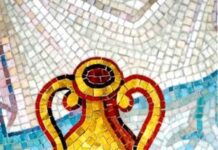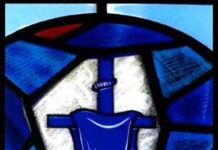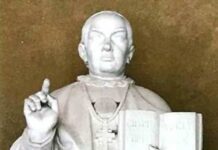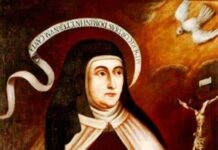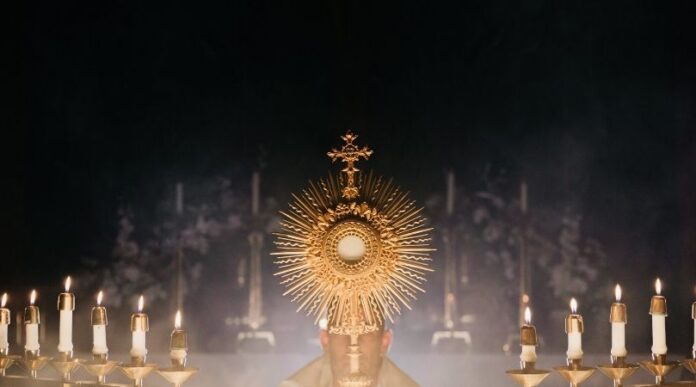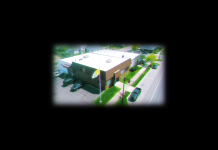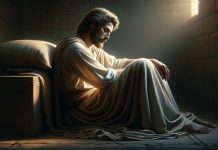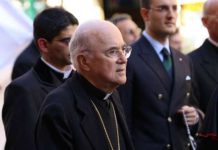You are not signed in as a Premium user; we rely on Premium users to support our news reporting.
Sign in or Sign up today!
“In the beginning, God created the heavens and the earth.”
Christians of the first centuries said that “the world was created for the sake of the Church.”

And it’s this Church that teaches He created the world for the sake of communion with His Divine Life.
But in His creation also came rejection by the free will of angels and humans.
Satan, at first a good angel rejected God and His reign, resulting in him along with his rebellious followers to be irrevocably cast out of Heaven.
On earth, a similar theme — this time instead of an angelic rejection, it was human disobedience. Satan tricked the first humans with the same temptation he willingly desired: “You will be like God.”
Similar to Satan being cast out of Heaven, Adam and Eve were thrown out of the Garden of Eden and their sin of disobedience destroyed the communion of men with God.
The Church: United in Christ Who Fulfills the Law
In a narrow sense, the word “church” means convocation or assembly — a gathering together of the people of God.
But in its original meaning, it means something much deeper — it means God’s chosen people in deep relationship with Him, called by Him, brought together by Him for the sake of intimacy with Him (very much like a marital union).
This covenant was fully revealed in the New Testament through Jesus, who perfectly fulfills all the Old Testament prophesies.
After the fall of Adam and Eve, this gathering together began in the Old Testament with Abraham when God promised He’d be the father of a great people — a multitude of nations.
Israel was chosen as the sign of the future gathering of all nations, but the prophets charge Israel with breaking the covenant, and so they announced a new and eternal covenant. This covenant was fully revealed in the New Testament through Jesus, who perfectly fulfills all the Old Testament prophesies, and His purpose for coming was to accomplish the Father’s plan of salvation in the fullness of time.
Jesus hand-picked his 12 Apostles and appointed Peter as their head, endowing His people with an impenetrable structure: “And I say to thee: That thou art Peter, and upon this rock I will build my Church, and the gates of Hell shall not prevail against it. And I will give to thee the keys of the kingdom of Heaven” (Matthew 16:18–19).
The Church is born through the total self-giving of Christ. It’s anticipated through the institution of the Eucharist and then fulfilled through His Crucifixion — with the blood and water flowing from His side considered the birth of the Church.
For roughly the first thousand years of the Church, all Christians were Catholic.
After the work of Christ was accomplished on the Cross, the Holy Spirit was sent on Pentecost to continually sanctify the Church.
The Holy Spirit guides the Church and protects Her from all error, and this has been the case for its 2,000-year existence.
All Early Christians Were Catholic
The heresies of Gnosticism, Arianism, Pelagianism, Protestantism, Jansenism, and all the others were all tackled by Holy Mother Church.
For roughly the first thousand years of the Church, all Christians were Catholic, as revealed in the many writings of the first centuries’ Christians.
- In the year 110: “Wherever the bishop shall appear, there let the multitude of the people also be; even as, wherever Jesus Christ is, there is the Catholic Church” (Tertullian of Carthage, Prescription Against Heretics).
- In the year 200: “at first were believers in the doctrine of the Catholic Church, in the church of Rome” (Tertullian of Carthage, Prescription Against Heretics).
- In the year 350: “nor merely where the church is, but where the Catholic Church is. For this is the peculiar name of this holy Church, the mother of us all” (Cyril of Jerusalem, Catechetical Lectures).
- In the year 390: “We must hold to the Christian religion and to communication in her Church, which is Catholic and which is called Catholic not only by her own members but even by all her enemies” (Augustine of Hippo, Of True Religion).
It was also around this time that the canon of Scripture, which we today call the Bible, was put together.
Early Writings Formed Scripture
The Old Testament was written well before Christ’s birth but the New Testament was written generally around the first 70 years after Our Lord’s resurrection.

Catholic Church Fathers in the light of the Holy Spirit
Through strict investigation, the Catholic Church, guided by the Holy Spirit, discerned that there are 27 books in the New Testament. Because there were many early Christian writings, the Church had to determine which books were inspired by God and which ones were not.
This process finished up in the year 382 at the Council of Rome under Pope Damasus. The Church promulgated the 73-book scriptural canon (46 Old Testament books and 27 New Testament books).
In 393 at the regional Council of Hippo, the biblical canon was reaffirmed, and in 397 at the regional Council of Carthage, it was reaffirmed again.
In 1442 at the ecumenical Council of Florence, the biblical canon was definitively reaffirmed and about a century later in 1546 at the ecumenical Council of Trent, the 73 books of the Bible were solemnly defined.
Christs’ Church Survives Schism
The ecumenical Council of Trent was a response to the Protestant revolt led largely by Martin Luther and his followers. The revolt against the Catholic Church in the 1500s led to the 30–40 thousand different Christian denominations that currently exist around the world today.

Along with many other rejected beliefs, due to the Protestant revolt, for the first time in Christian history, Christians denied the Real Presence of Jesus in the Eucharist.
Bishop Fulton J. Sheen, a man Pope John Paul II called a loyal son of the Church, and whose cause for sainthood is currently ongoing, explained the past five centuries in this way:
- The 16th century witnessed a new Church, as it became a sect
- The 17th century witnessed a new spirituality that was nonintellectual and pietistic
- The 18th century witnessed a new christ — instead of a Savior Christ, He just became a good moral teacher
- The 19th century witnessed a new god, who became a symbol for the evolution of things that were always for the better
- The 20th century witnessed a new religion, which entailed an attitude of friendliness to the universe
Although the 21st century seems to be witnessing a culmination of these problems, Christ’s Church still remains the One True Faith.
In this week’s Mic’d Up, Michael Voris interviews Dr. Ralph Martin about his new book: A Church in Crisis: Pathways Forward.
— Campaign 31540 —
Have a news tip? Submit news to our tip line.

We rely on you to support our news reporting. Please donate today.



